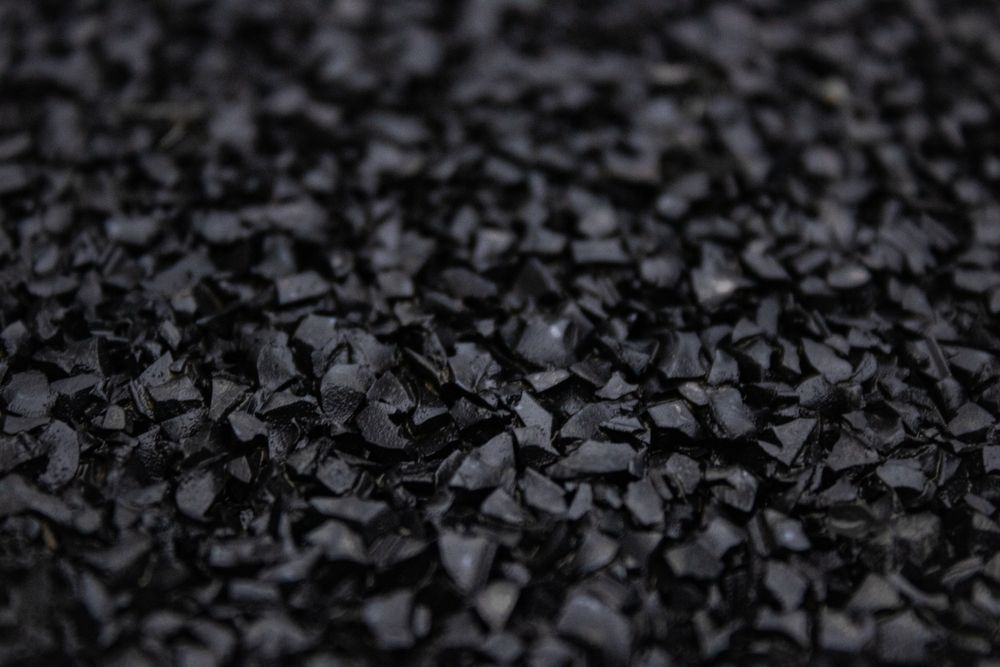The Rise of Biodegradable Bio-Based Synthetic Rubbers
July 28, 2025
What Are Bio-Based Synthetic Rubbers?
Bio-based synthetic rubbers are made from renewable raw materials like corn, sugarcane, and soy instead of petroleum. They’re engineered to perform like traditional synthetics but rely on plant-derived inputs to reduce fossil fuel use.
These rubbers use the same monomers found in conventional production, such as butadiene and isoprene. The key difference is that these building blocks come from biomass rather than crude oil. This allows manufacturers to maintain performance while moving toward lower-impact, more sustainable production methods.
How They Differ from Petroleum-Based Synthetics
The biggest difference lies in the source of raw materials. Petroleum-based synthetic rubbers start with crude oil, which is refined into chemicals like butadiene and isoprene. In contrast, bio-based versions use plant-derived feedstocks such as ethanol or sugars to produce the same monomers.
From a chemical standpoint, the end products can be nearly identical. That’s intentional. Manufacturers want to keep existing production lines and equipment, so compatibility is important. What changes is the carbon footprint and the renewability of the inputs.

In some cases, bio-based rubbers also open the door to enhanced biodegradability. While not all are biodegradable by default, newer formulations are being developed that can break down more readily under industrial composting or controlled disposal conditions. That makes them a better fit for applications where product lifespan is shorter or waste reduction is a focus.
Why the Rubber Industry Is Turning to Bio-Based & Biodegradable Solutions
Rising pressure to reduce emissions, manage waste, and secure long-term raw material supply is pushing the rubber industry to rethink its inputs. Petroleum prices remain volatile, and supply chains tied to fossil fuels carry growing risks. In response, producers are exploring alternatives that give them more control and flexibility.
Bio-based synthetic rubbers provide a path forward. They allow companies to keep performance levels high while cutting their reliance on non-renewable resources. Some of these materials are also designed to degrade faster in controlled environments, which supports waste reduction goals in industries like footwear, consumer goods, and packaging.
Government policies and customer expectations are also shaping this shift. Regulations are tightening around chemical use and end-of-life waste. At the same time, more buyers are asking for products made from renewable sources. This combination is driving research, investment, and real-world adoption of biodegradable and bio-based rubber solutions.
From Natural Resources to Synthetic Rubbers: What’s Changing?
Synthetic rubber has traditionally depended on fossil fuels. Now, more producers are turning to renewable feedstocks like sugars and oils from plants. The chemical structure remains largely the same, but the shift in raw materials is changing how rubber is made and where its impact is felt.
What Natural Resources Are Used to Make Synthetic Rubber Today?
Today’s synthetic rubber can be made using renewable feedstocks such as sugarcane, corn, soybean oil, and other bio-based materials. These resources are converted into monomers like isoprene, butadiene, or styrene through fermentation, dehydration, or catalytic processing.
For example:
- Sugarcane and corn produce ethanol, which can be transformed into bio-butadiene or bio-isoprene.
- Soybean oil and other vegetable oils are used to create additives or softening agents that improve flexibility and durability.
- Glycerol, a byproduct of biodiesel production, is also being explored as a building block for new rubber chemistries.
The result is a growing supply of synthetic rubbers that don’t rely on crude oil, yet still meet the performance standards required in tires, seals, footwear, and adhesives.
The Importance of Renewable Feedstocks and Circular Design
Switching to renewable feedstocks is more than a sourcing decision. It reshapes how rubber materials fit into long-term sustainability goals. Using plant-based inputs reduces dependence on petroleum and creates the potential for lower lifecycle emissions.
These changes also support circular production models. When rubber is made from renewable carbon, it becomes easier to integrate into systems that prioritize reuse, recycling, or controlled biodegradation. This is especially important for high-volume products like tires, belts, and gaskets, where waste can quickly scale.
Circular design doesn't only focus on end-of-life. It also considers how materials behave during manufacturing, how long they last in use, and what happens to them afterward. Bio-based rubbers built from renewable sources are helping manufacturers rethink each step of the process.
The Role of Green Solvents and Bio-Based Chemicals in New Rubber Formulations
Developing more sustainable rubber materials doesn’t stop at the polymer itself. The additives, carriers, and solvents used during production also influence the environmental profile of the final product.

Green solvents made from renewable ingredients are increasingly replacing traditional petrochemical-based options in compounding and cleanup. These alternatives help reduce VOC emissions, improve workplace air quality, and align with low-toxicity formulation goals. Their performance matches conventional solvents in mixing, blending, and processing, without relying on hazardous chemicals.
Alongside solvents, bio-based additives like plasticizers, stabilizers, and curing agents are being used to fine-tune properties such as flexibility, strength, and thermal resistance. As demand grows for fully or partially renewable rubber systems, these secondary components are becoming just as important as the rubber itself in achieving lower-impact production.
How Vertec BioSolvents Empowers Sustainable Rubber Manufacturing
Vertec BioSolvents provides high-performance, plant-based solvents that help rubber manufacturers reduce reliance on petroleum chemicals. These solvents are used during production for cleaning, formulation, and material handling.
Made from renewable sources like corn, soy, and citrus, Vertec’s products deliver strong solvency while lowering VOC emissions and exposure risks. They’re well-suited for operations focused on safer working conditions, improved air quality, and more sustainable sourcing.
In rubber manufacturing, where solvent use is frequent and performance matters, Vertec’s
solutions offer a reliable, low-impact alternative. Their
compatibility with existing equipment and processes makes adoption straightforward, without sacrificing efficiency.
The Future of Bio-Based Synthetic Rubbers
Bio-based synthetic rubbers are moving beyond early adoption and into mainstream production. Backed by advances in renewable chemistry and processing, they’re now meeting performance standards across automotive, industrial, and consumer applications.
As raw material technology continues to evolve, manufacturers are gaining access to more reliable, lower-impact options. Paired with bio-based solvents and additives, the shift toward fully renewable rubber systems is becoming more practical and scalable.
Vertec BioSolvents plays a key role in this transition. Our solvents help
manufacturers
reduce emissions, improve safety, and align rubber production with long-term sustainability goals. To explore how our products can fit into your operation, contact us today.


